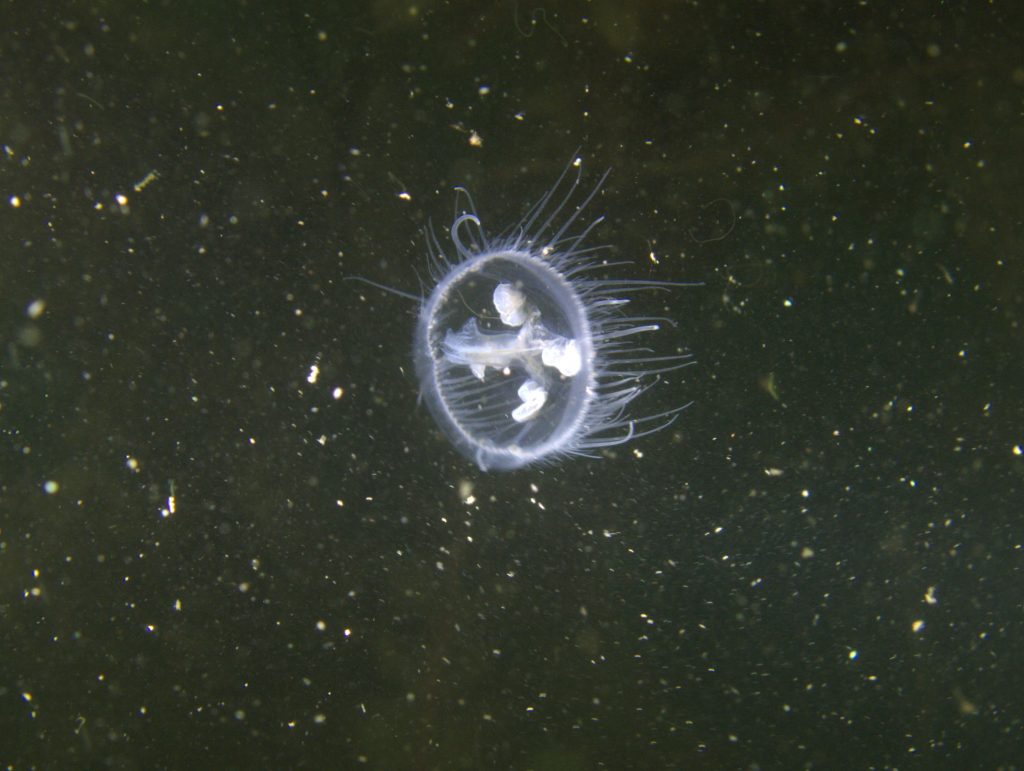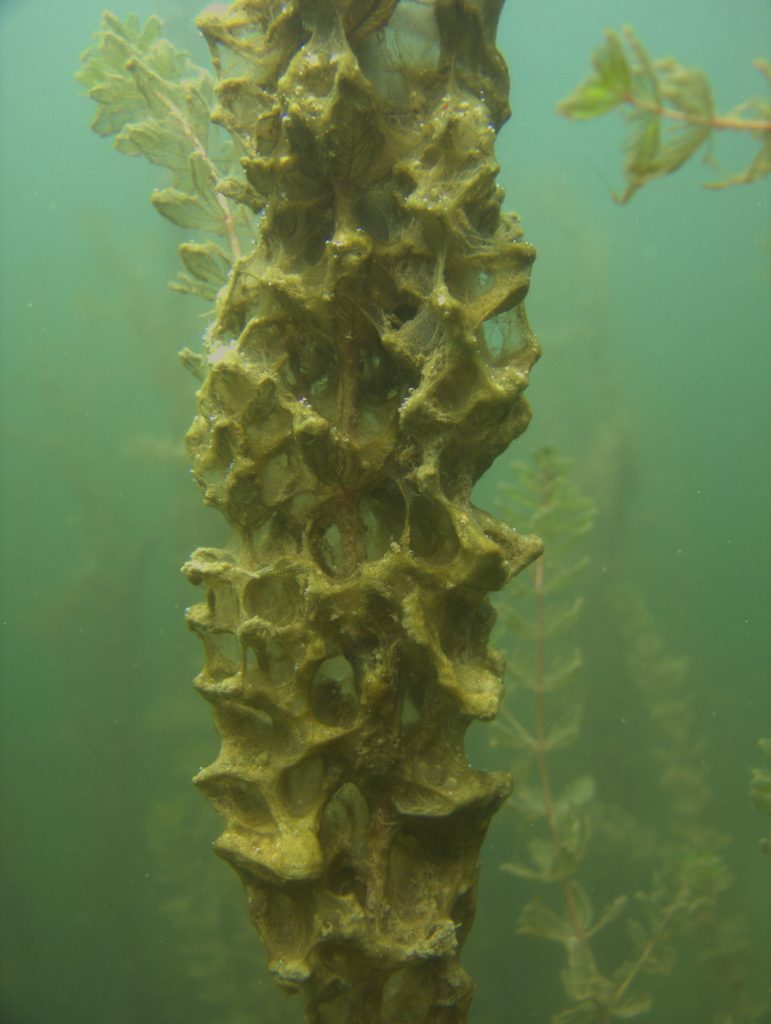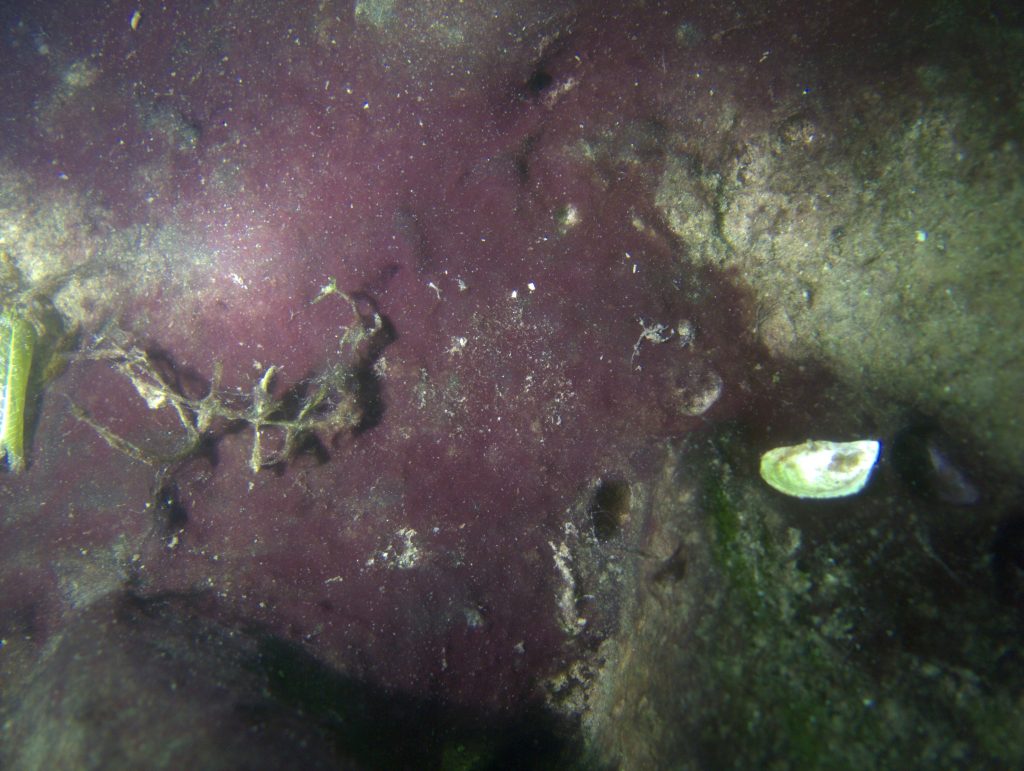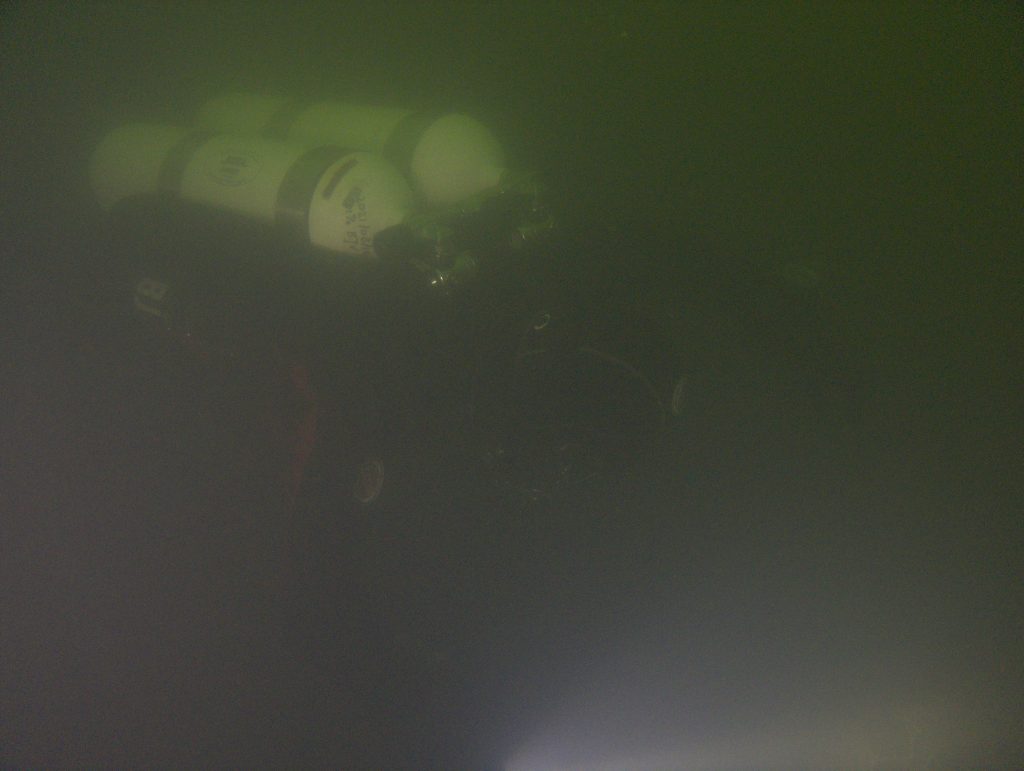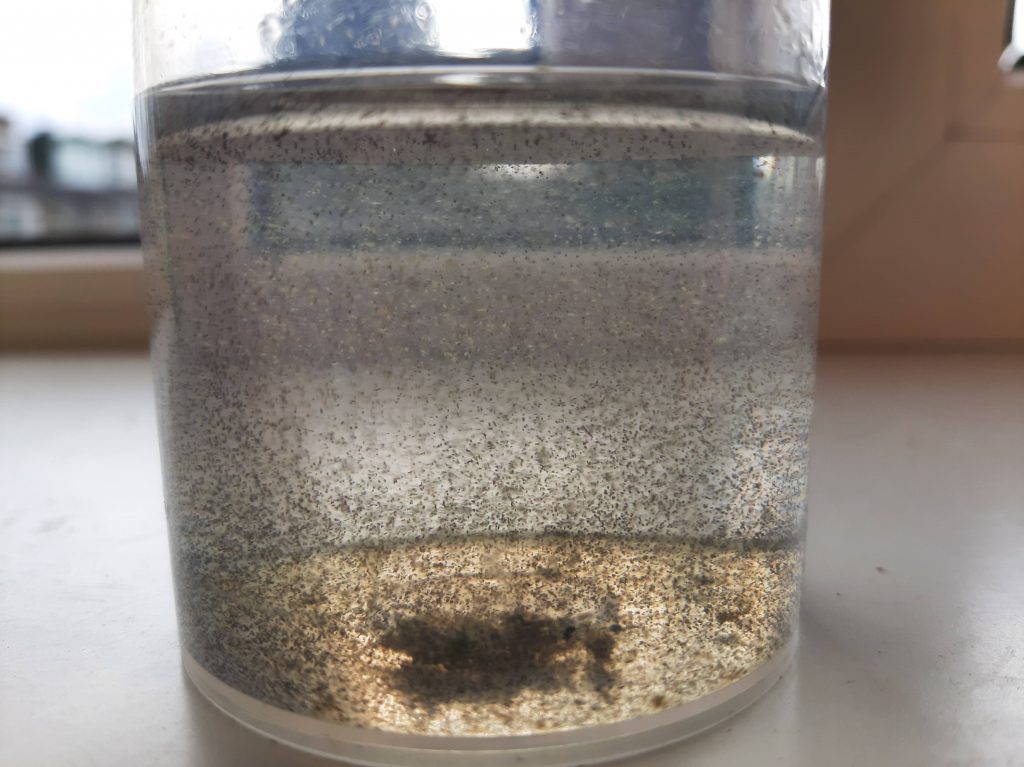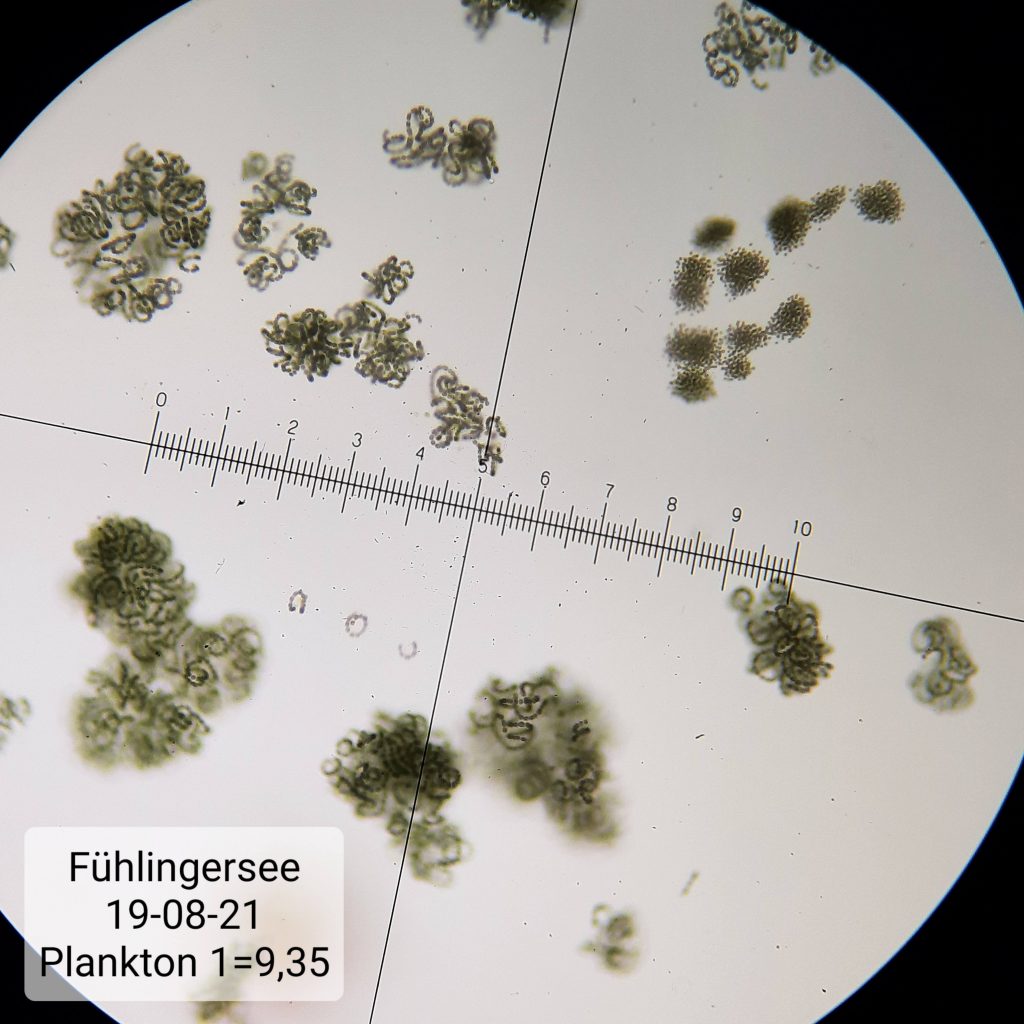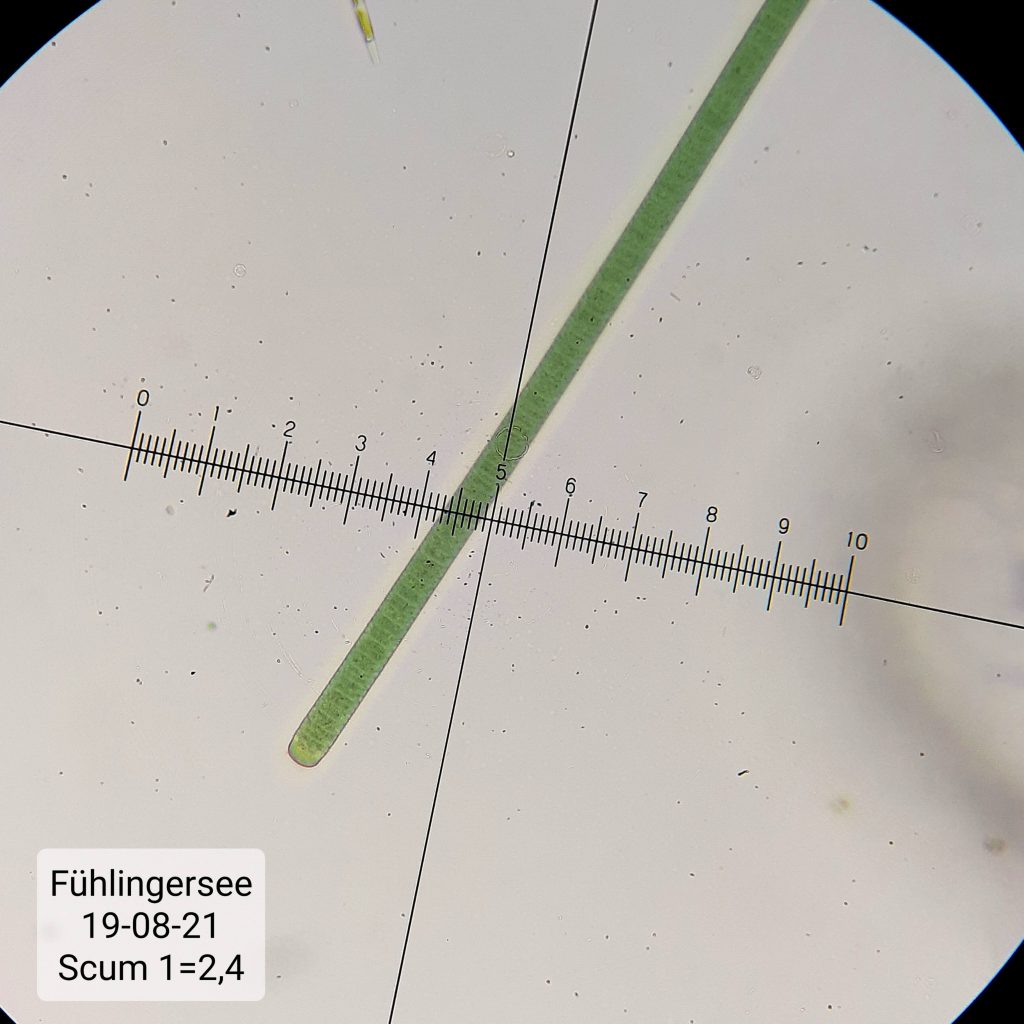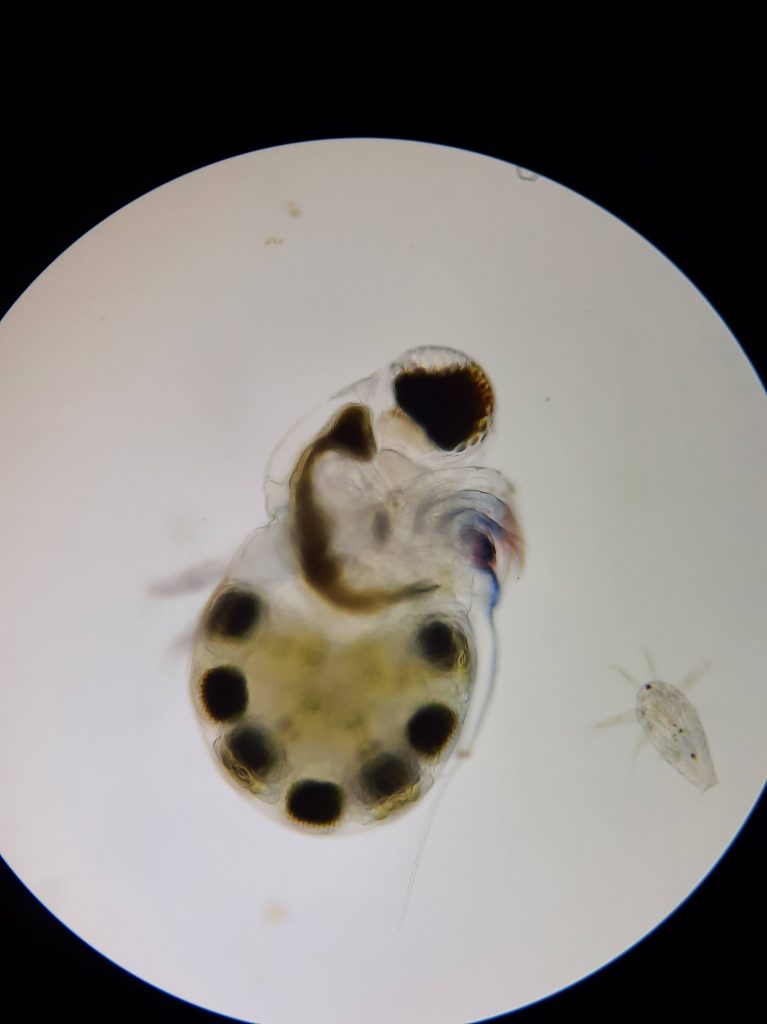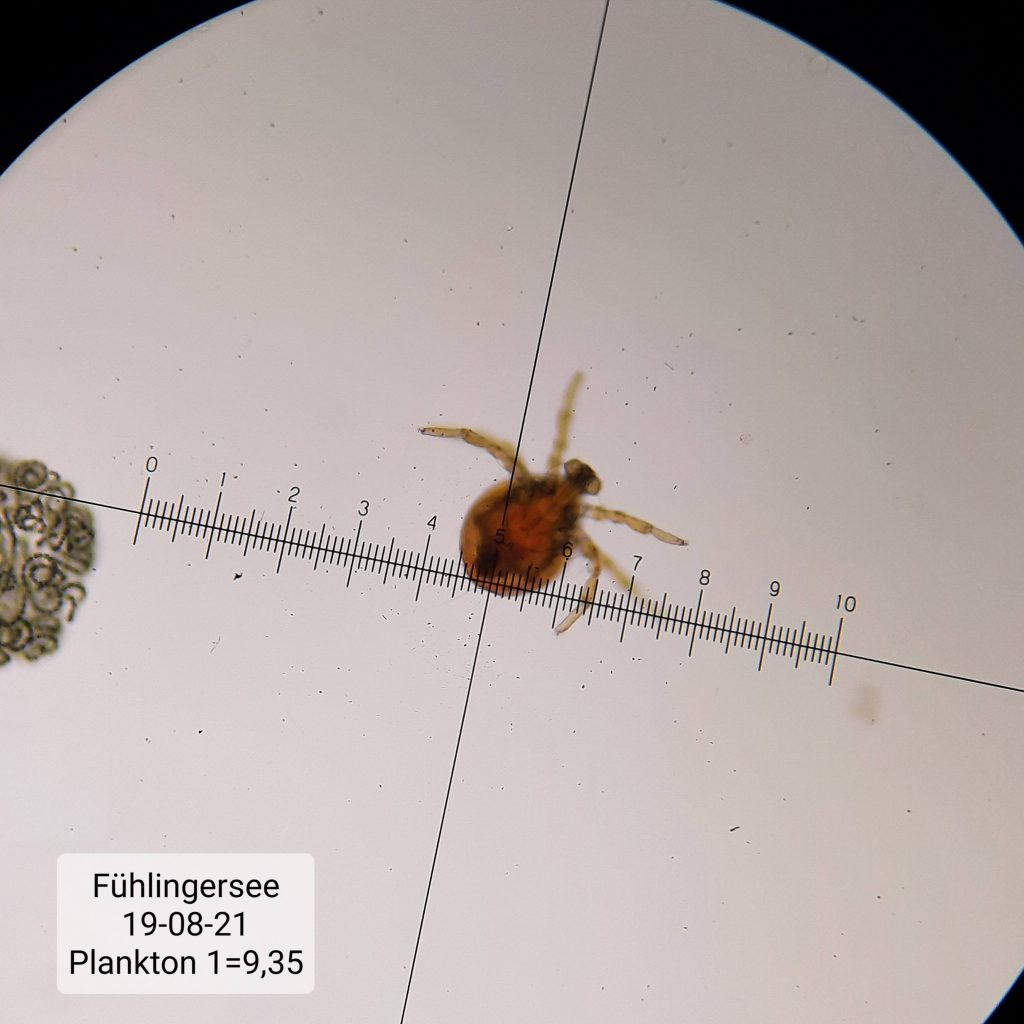It is always nice to visit other projects to learn from. Berend-Jan invited me to come to Köln (Cologne) and see how the group of VASA-Koeln go about their business doing chemical water analysis in the lakes of Fühlingen, eight times per year. This was the last measurement of the season.
Normally I’m not keen on driving six hours in total for just one dive, but the water analysis procedure the group was to conduct during the evening, won me over.
Berend-Jan arranged the necessary dive permits and kept in close contact with Andreas of the VASA team. Our ETA was 15:00 hrs at Parking 1 as we would dive lake number 5.
The Fühlinger See area consists of seven lakes and a rowing/ canoe track of 2,3 Kilometers long.
It has various leisure facilities. From 1912 on, the lakes were formed by the excavation of gravel. More details can be found on Wikipedia
The VASA group was formed to conduct chemical analysis and measure various parameters. They have been doing this for 20 years now.
They’ve devised some neat instruments to collect water samples and measure sediment thickness. More on that later!

The dive in lake # 5
Initially Martin from the VASA team, would join us for the dive, but unfortunately he had to cancel, but that wouldn’t keep us from diving.
The moment Berend-Jan and I started to build our dive sets, a man steps out of his car and asks us nicely for our dive permits. Yes we have them, but his phone app is not running as smooth as he hoped. After scanning the QR codes he wishes us a nice dive.
I choose to put on my thick undersuit as I expected the lake to be stratified. Meaning stone cold water in the deeper parts and lukewarm in the upper layers.
We walked to the entry point next to the willow tree. The moment we stuck our heads under water we saw freshwater jelly fish (Craspedacusta). August / September is their moment to shine, but in my home lake Haarlemmermmerse bos, they haven’t been sighted after 2015.
In 2016 they dismantled the water mixing system. It occurred to me that freshwater jellies didn’t appear when the lake became stratified in 2013 and 2014.
In 2015 when the mixing system worked for the whole season albeit with many compressor failures, the jelly fish appeared again.
So my thought was the polyps who might have been dormant in the deeper part of the lake were not exposed to the needed rise in temperature, as the lake became stratified. Fühlingersee is stratified and has jellies, so that raised a few questions in my mind, but maybe the polyps have their dormant state in shallower water.
Both Berend-Jan and I were shortly mesmerized by these gentle (non-stinging) jellies. Water milfoil is growing tall and some plants are covered by cyanobacteria.
These motile (moving) cyanobacteria have the ability to completely cover water plants in an extremely fine web of (dark) green or purple filaments. On top of that, dead organic material has precipitated on some of these plants turning them a golden silk-like ornaments.
Once we got through that freshwater kelp, we hit a gentle thermocline at about 5 meter depth. Purple mats of Oscillatoria cover the bottom and on them, we saw Hydra’s.
The deeper we got, the colder it became and visibility got worse and worse until the white fog refracted our dive light into a faint purple color.
Large fields of Beggiatoa bacteria with net like structures as far as the eye could see (which wasn’t much).
When we reached a dept of 15 meters, the purple light turned yellowish.
There were some dead jelly fish lying on the bottom. Bacterial lavastream-like rivers colour the bottom. It was a surreal world. These Beggiatoa bacteria represent low to zero oxygen levels and that mist is infact hydrogen sulphide
We measure a temperature of 8 degrees Celsius as the upper layers are between 19-21 Celsius.
We were told, hydrology studies revealed the water of the Rine flows from various directions under the Fühlinger See. Ground water may well up in the deepest parts of the lake, stimulating stratification and perhaps anoxia. The wind has little effect on these lakes as the area is surrounded by trees, so there’s hardly any natural mixing of water. There is a water mixing systeem active in lake #6 though.
Once in a while we see little hills of gravel, while the rest of the bottom varies from soft blubbery sediment to hard substrate being gravel.
We haven’t seen fish or any other living organism (aside from dying jelly fish) under the five meter thermocline, so that also tells us something about oxygen levels below that thermal border.
I know some fish like eal have a tolerance for a certain amount of time in low oxygen conditions.
After a while the cold started to kick in and we took to the shallows to find us some warmth, fish and plants. We saw perch, pike, eal, gobies and we believe to be a Sun bass (Lepomis gibbosus). I’m no expert on fish though. I tried to make photos, but like gobies they stand still until you want to take a photo. One living zebra mussel (Dreissena polymorpha) caught my eye. Further more some empty Asian clam and pond snale.
Also various Stonewort species.
A freshwater sponge grew on a thin branch of the willow tree. The photo I took revealed black specks on it and a few colonies of Microcystis.
Berend-Jan was lucky to see a carp under that tree.
After 90 minutes we concluded our dive.
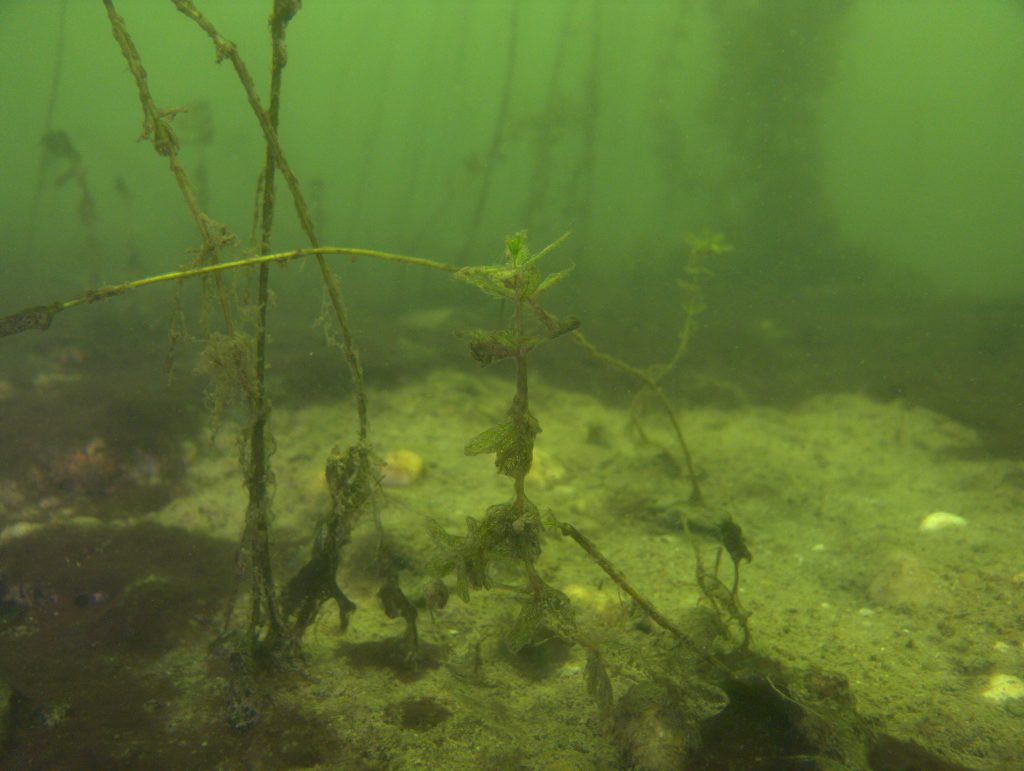
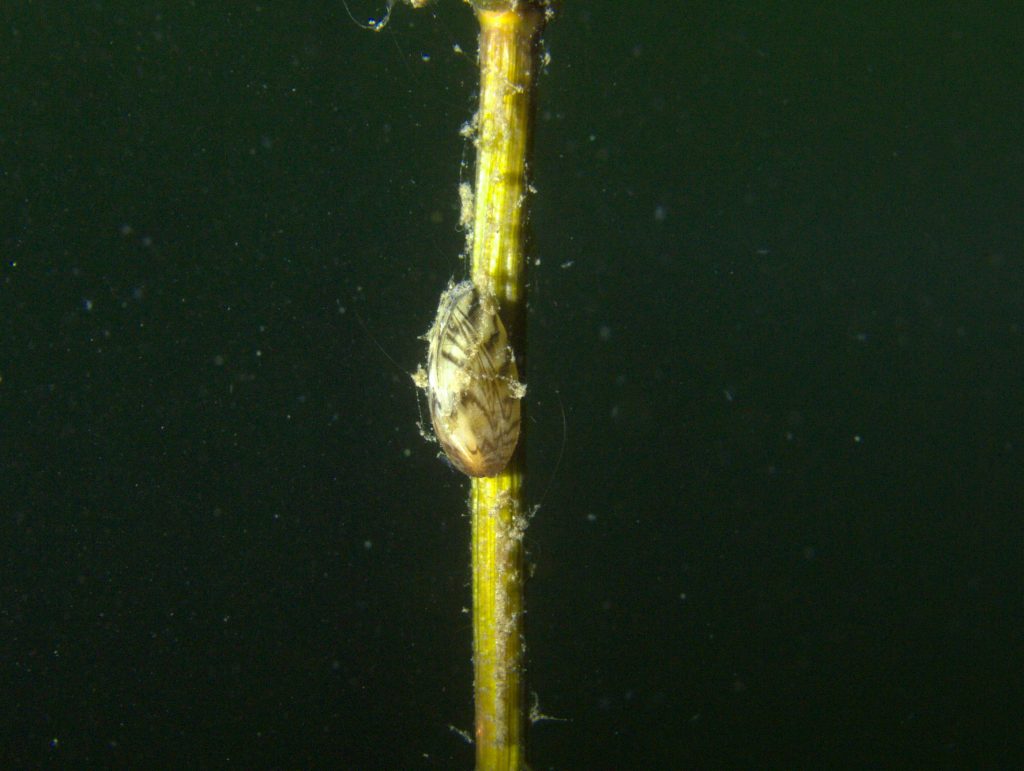
Zebra mussel (Dreissena polymorpha) 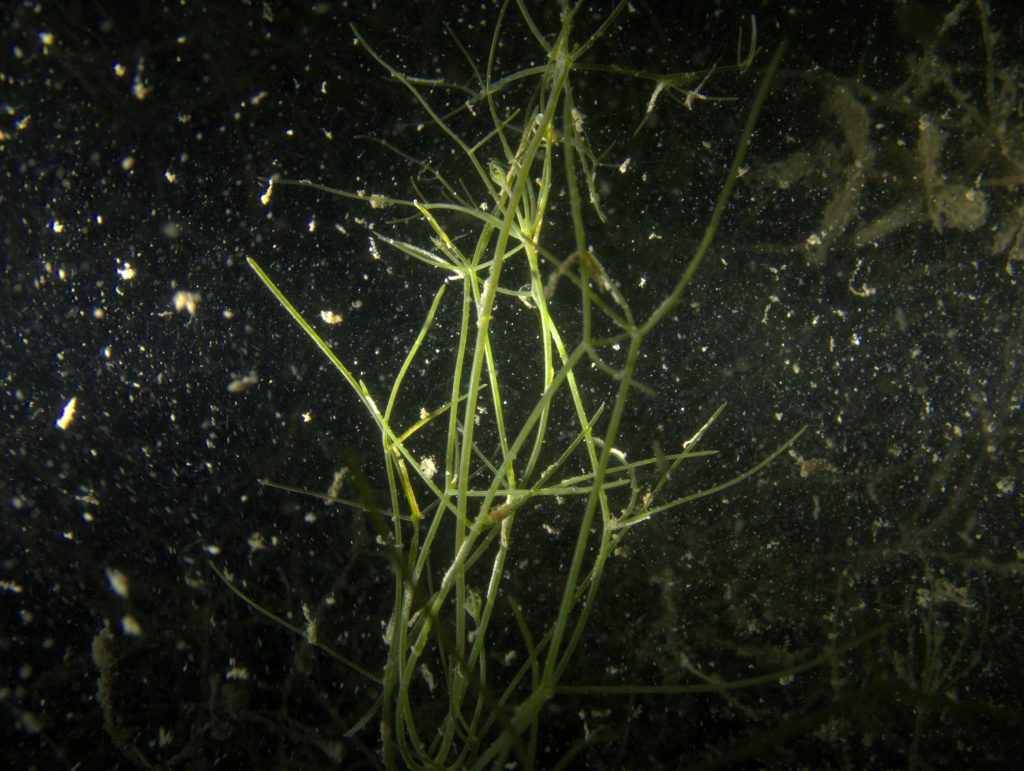
Stonewort 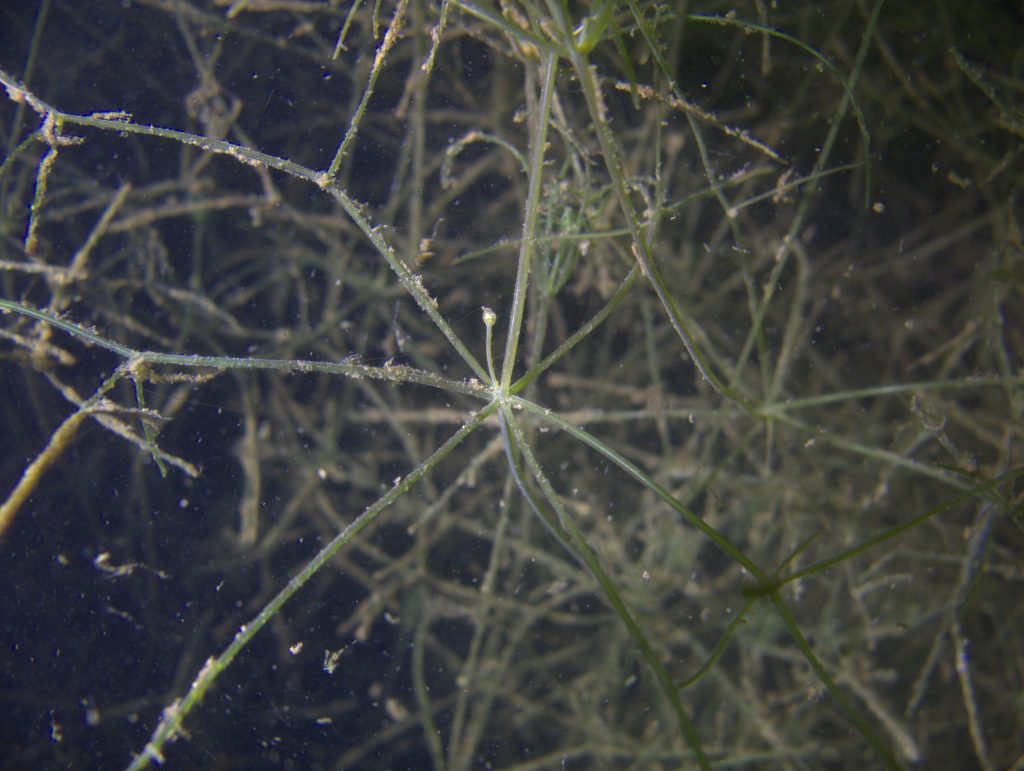
Stonewort sp. 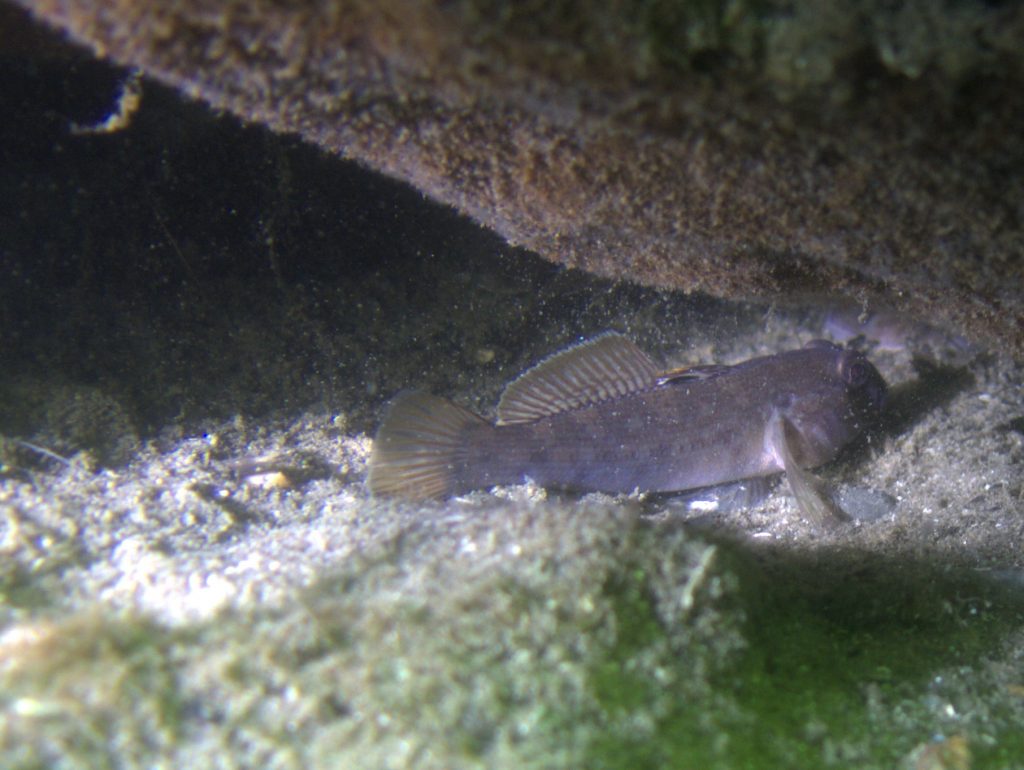
Goby 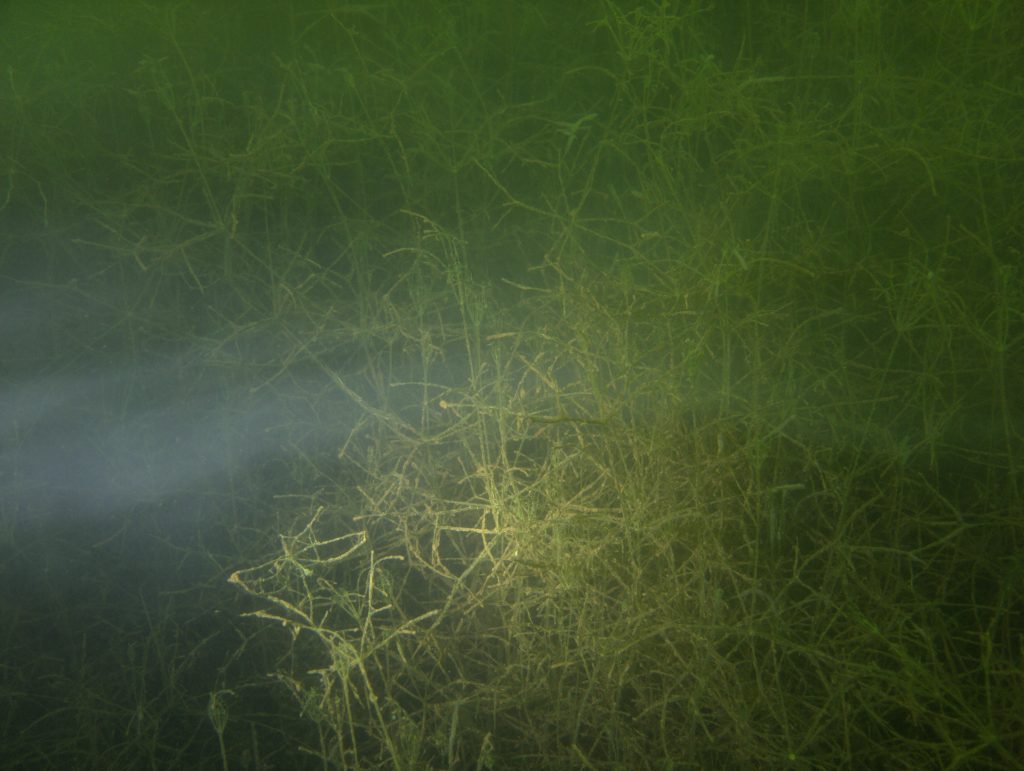
Stonewort in the mist 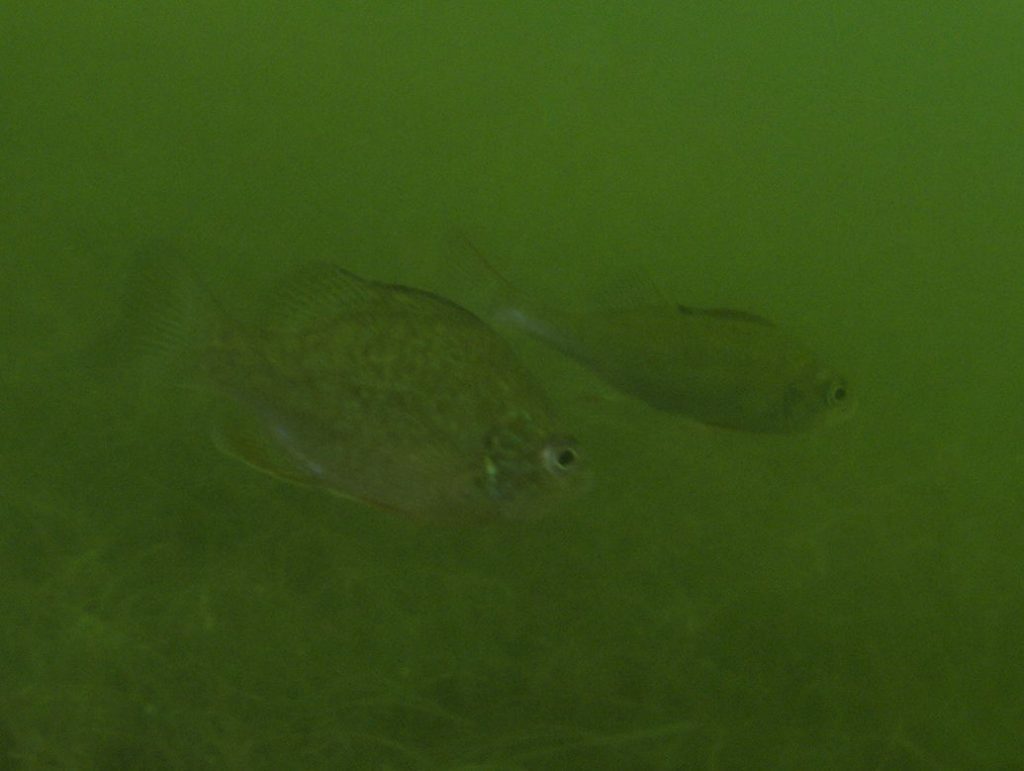
Sun bass? 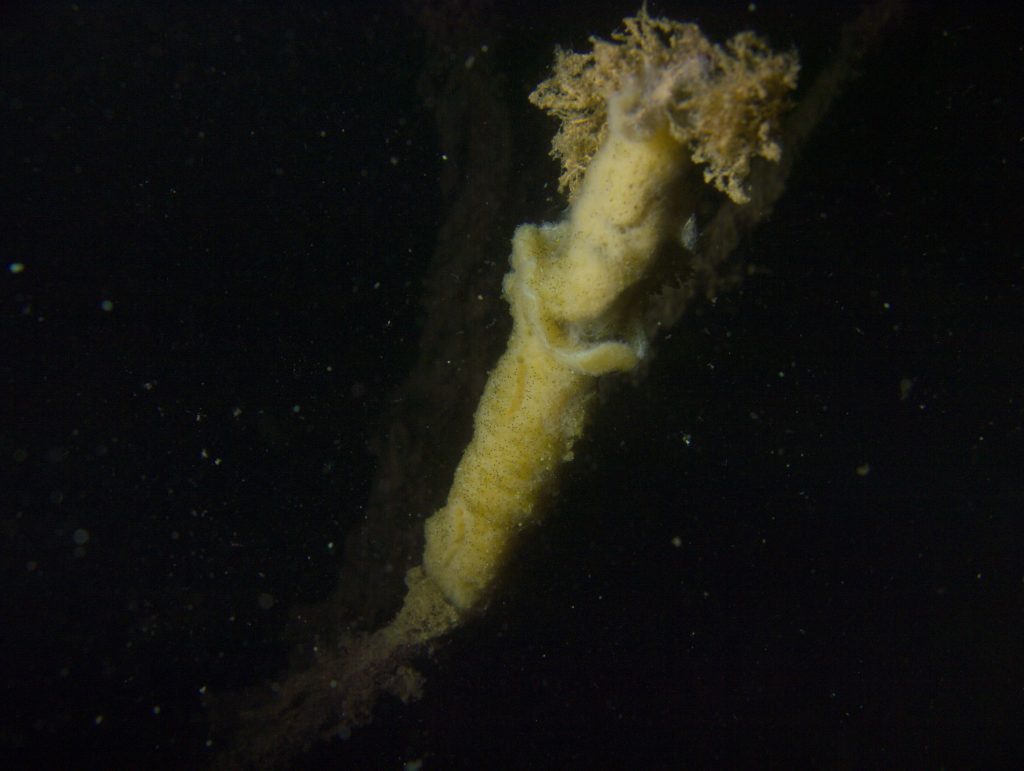
Freshwater sponge
Back at the car we take our sets off and we see the guy who asked us for our dive permits, drive away. Was he actually waiting for us?
Apparently so.
After coffee and cookies we contact Andreas and drive to Parking #5.
There we meet the big team who will do the measurements. They’ve devised some cool instruments such as a water collecting unit.
It’s a triangular frame with three glass bottles with bottle caps on both ends. So with one unit they can take three water samples from three different depths.
In total they take six water samples.
To measure sediment thickness, a collapsible tent pole is used. A sleeve with centimetre indications on it does the job.
The chemical analysis however looks even more professional.
A dive team searched for the deepest part of the lake using a water tight sonar they bring along. First water sample is taken from the surface and they work their way down. As soon as the water samples were taken and brought to the surface, they were put on a table and the caps were removed .
First the surface team smell the samples.
Immediately after that, the dissolved oxygen and temperature was measured and noted, another team member measured electro-conductivity, and another team member PH.
Then with syringes, 96 test tubes are filled with sample water from the six samples bottles.
There are six reference tubes representing water from the surface, 2,5 / 5 / 7,5 / 10 and above te bottom.
15 parameters were measured like Phosphate, Nitrate, Sulphate, Iron, Ammonium, Hardness, Total hardness etcetera.
In those 90 test tubes, reagents are added. With a Machery – Nagel photometer these 90 test tubes are scanned and results are noted.
So one instrument measures those 15 parameters in no time.
Last but not least a refractometer is used, but gave a standard value of 0,001.
This team was ready before it got dark.
We’ve brought our planktonnet, because that is something they do not look at.
I took of my shoes off and stepped as far in the water as my rolled up pants allowed me to go.
Little black specks float in the water and it looked like sediment at first. Any way I take two hauls with the net.
Also took a sediment sample and some scum of the surface. There was no time to look at the samples as we had to go back to the parking and head home.
Back at the parking only one species of plant was presented being “Common bladderwort” (Wasserschlauch , Blaasjeskruid). Nothing else besides the usual species of plants was found.
We keep talking and talking, but once all the equipment and team members started to go home, Berend-Jan and I call it a day and say goodbye to Andreas and Werner as they were so very kind to guide and inform us of their work.
So what did we find in plankton sample?
Those black specks turned out to be Stentors (cilliates) These beautiful animacules were pretty dominant.
Next to those were many Polyphemus waterfleas. These look a bit like motorcylists with big helmets and black visors on.
I saw various cyanobacteria too, like Microcystis and Dolichospermum. and a watermite larvae!
In the Scum sample I found either Oscillatoria of Lyngbia cyanobacteria (It’s hard to tell the difference.) in colors going from green via brown to yellow.
Also some living diatoms.
Photos can be found in the link
